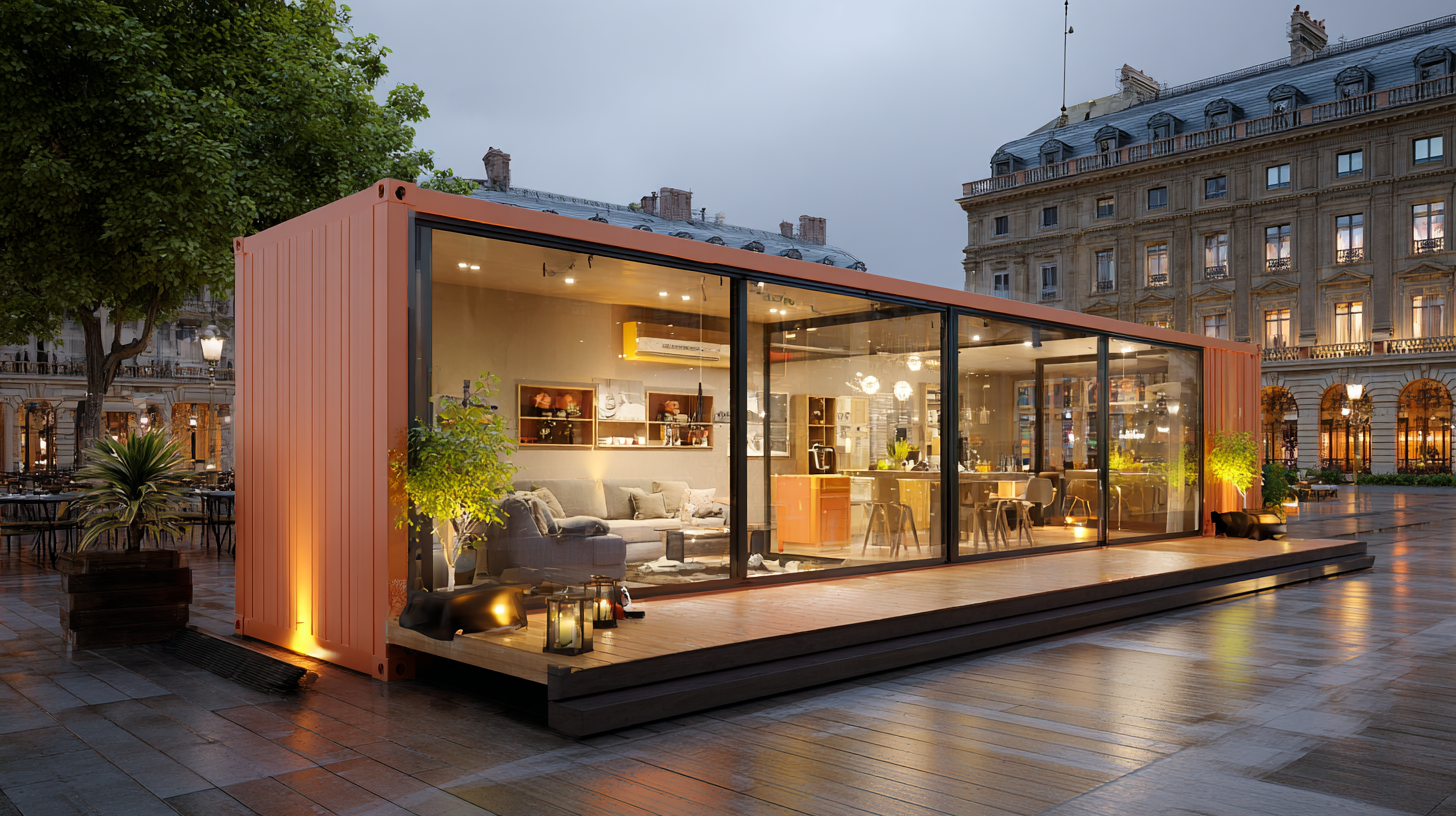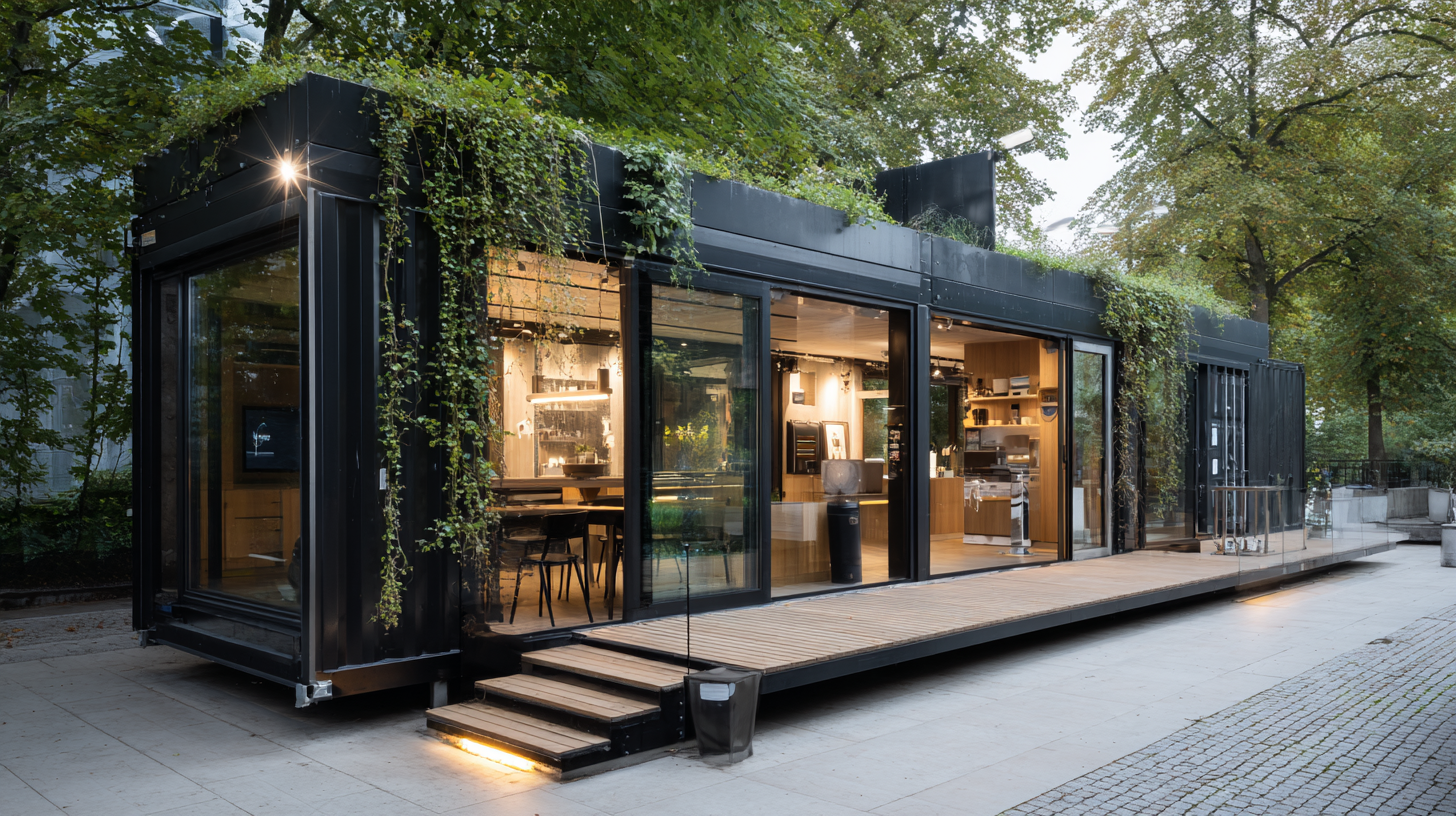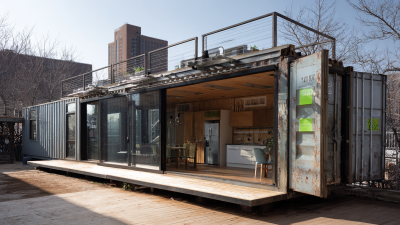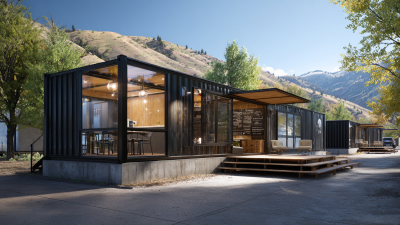Transforming Urban Living: Innovative Container Solutions for Modern Spaces
As urban areas continue to grapple with space constraints and housing shortages, innovative solutions are becoming increasingly vital to the transformation of urban living. One such approach gaining popularity is the use of containers for living space. These versatile structures not only offer a sustainable alternative to traditional building methods but also cater to the growing demand for flexible and affordable housing options.

By repurposing shipping containers, developers and designers are able to create stylish, modern living environments that can be adapted to various needs and preferences. This introduction explores the emerging trend of container-based architecture, highlighting its potential to redefine urban landscapes and improve the quality of life for city dwellers. As we delve into this evolving concept, we will examine the benefits, challenges, and innovative designs that are setting the stage for a new era of urban living.
Innovative Use of Shipping Containers in Urban Design
The innovative use of shipping containers in urban design is revolutionizing the way we conceptualize living and working environments in cities. According to a report by the Law Insider, the global shipping container market is projected to reach $9.3 billion by 2025, reflecting a growing interest in repurposing these robust structures for residential and commercial purposes. Shipping containers provide a sustainable and cost-effective solution to housing shortages, particularly in metropolitan areas where real estate prices are skyrocketing.
Moreover, in a study by the Urban Land Institute, it was found that container homes can be built for approximately 30% less than conventional houses, making them an attractive option for developers and municipalities seeking to address affordability challenges. These adaptable units can be stacked, arranged, and modified to fit various urban landscapes while fostering community interactions and creativity. As cities continue to evolve, the integration of shipping containers not only maximizes space but also promotes environmentally friendly practices by recycling materials that would otherwise contribute to landfill waste.

Benefits of Container Living for Sustainable Urban Development
 Container living is emerging as a transformative solution for sustainable urban development. These innovative designs not only address housing shortages but also promote eco-friendly practices. Utilizing repurposed shipping containers reduces the demand for traditional construction materials, significantly lowering the environmental footprint. Additionally, container homes can be more energy-efficient, requiring less energy for heating and cooling, which aligns perfectly with contemporary sustainability goals.
Container living is emerging as a transformative solution for sustainable urban development. These innovative designs not only address housing shortages but also promote eco-friendly practices. Utilizing repurposed shipping containers reduces the demand for traditional construction materials, significantly lowering the environmental footprint. Additionally, container homes can be more energy-efficient, requiring less energy for heating and cooling, which aligns perfectly with contemporary sustainability goals.
Tips for Container Living:
- Choose a Modular Design: Opting for a modular design allows for greater flexibility in space management and encourages creative aesthetics while accommodating structural integrity.
- Incorporate Green Features: Consider adding solar panels and green roofs to maximize energy efficiency and support biodiversity. This not only enhances the living environment but also contributes to the overall sustainability of urban spaces.
- Utilize Vertical Space: To maximize small interiors, incorporate shelving and multipurpose furniture that can serve multiple functions, making the living space both practical and stylish.
With container living, urban areas can embrace innovative solutions that enhance both the quality of life and the health of our planet.
Customizable Features: Transforming Containers into Modern Homes
As urban spaces continue to evolve, the demand for innovative living solutions has never been greater. Customizable features are essential in transforming shipping containers into modern homes that fit diverse lifestyles. According to a recent report by the World Economic Forum, the global modular construction market is projected to grow by 6.5% annually, driven by affordability and sustainability concerns. This trend highlights how container homes not only provide a cost-effective solution but also contribute to efficient use of resources.
When considering a container home, it's important to focus on customization options that enhance functionality. Innovative features such as foldable furniture, detachable storage units, and smart home technology can greatly improve the living experience. For example, a survey from the International Modular Building Institute revealed that nearly 60% of homeowners prioritize adaptability and design personalization when opting for modular living. Choosing sustainable materials and energy-efficient systems can also significantly reduce monthly utility costs.
Tips: To maximize space in a container home, consider vertical storage solutions and multi-functional furniture. Additionally, leveraging natural light through large windows can create a more inviting atmosphere. Lastly, investing in smart home technology can provide enhanced control over your living environment while promoting energy efficiency.
Integrating Container Solutions with Smart Home Technology
As urban living continues to evolve, the integration of container solutions with smart home technology presents an innovative approach to maximizing space and enhancing functionality within modern environments. Container homes, often characterized by their modular design and efficient use of materials, can be effortlessly equipped with smart devices that control lighting, temperature, and security systems. This seamless combination not only optimizes energy consumption but also creates a more comfortable living experience tailored to individual needs.
Moreover, smart home technology enables residents to monitor and manage their container homes from anywhere, contributing to a heightened sense of security and convenience. Features such as remote access to door locks, security cameras, and home automation systems allow urban dwellers to maintain peace of mind while enjoying the flexibility of a mobile lifestyle. The ability to customize these smart systems further enhances the appeal of container living, making it a practical choice for those seeking a contemporary urban lifestyle that embraces both innovation and sustainability.
Transforming Urban Living: Container Solutions in Smart Homes
This chart showcases the growing adoption of container solutions integrated with smart home technology in urban areas. The data represents the percentage increase in popularity from 2019 to 2023 across different types of container solutions: living spaces, offices, and mixed-use developments.
Case Studies: Successful Container Communities Around the World
Container communities have emerged as a transformative solution for urban living, offering innovative and sustainable housing options. One notable example is the Container City in London, which features a series of shipping containers adapted into artist studios, homes, and offices. This development not only utilizes repurposed materials but also promotes collaboration within the artistic community. The modular nature of the containers allows for scalability and flexibility, making it an attractive model for urban regeneration.
Another inspiring case is the Taproot Community in Vancouver, Canada. This project showcases how shipping containers can be transformed into a vibrant neighborhood that fosters social connections and environmental sustainability. Taproot incorporates green spaces and communal areas, encouraging residents to engage with one another and the surrounding environment. These successful container communities demonstrate that with innovative design and thoughtful planning, urban spaces can evolve to meet the needs of modern city dwellers while promoting sustainability and community spirit.




